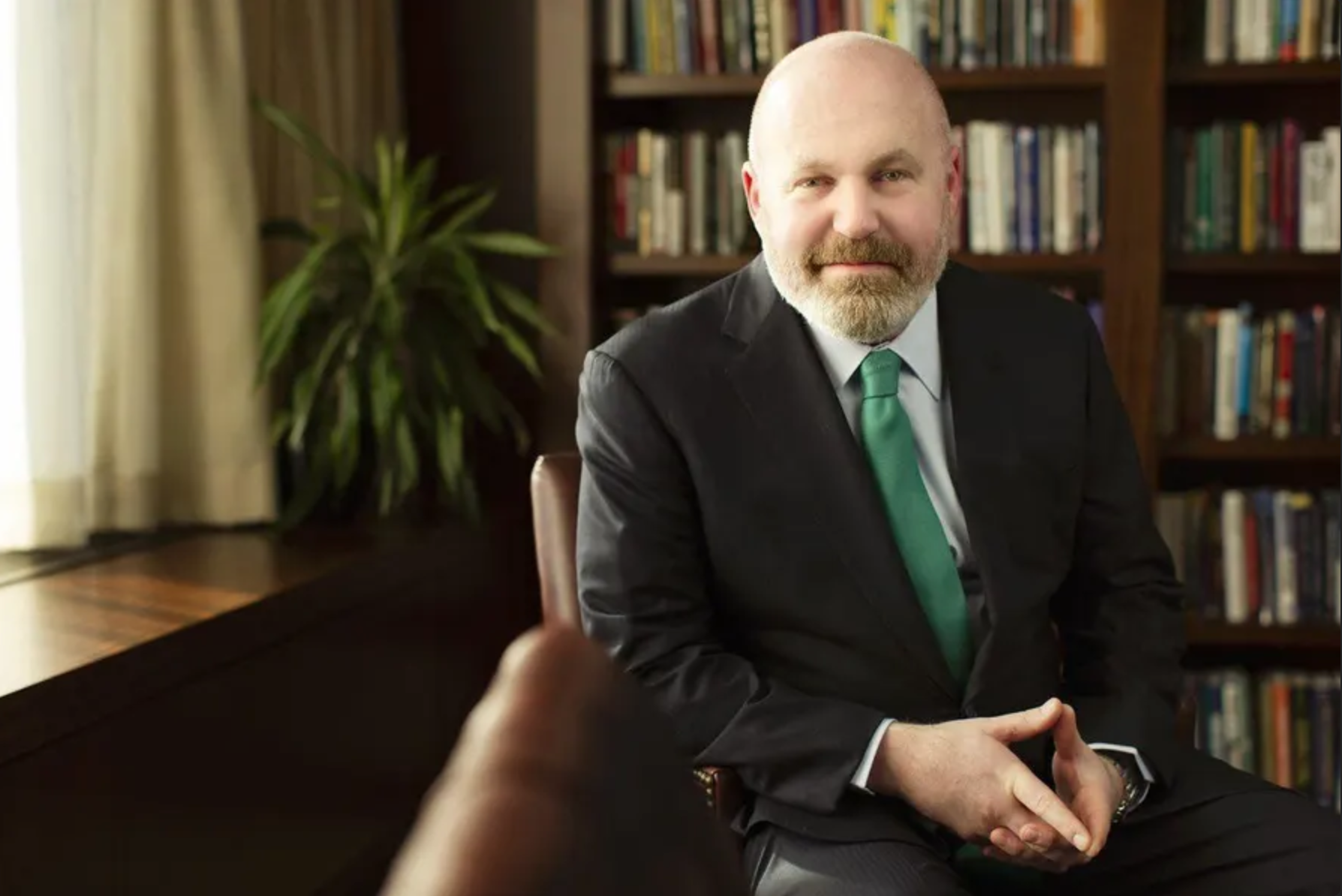Почему Клиффа Аснесса, в фонд которого мы вложились, считают одним из лучших инвесторов в мире
%20(1).png)
Vyacheslav Dvornikov
Nov 26, 2024Клифф Аснесс — миллиардер, основатель и руководитель компании AQR Capital Management, под управлением которой находится 110 млрд долл. Он один из пионеров количественных методов и при этом остается сторонником стоимостного инвестирования. Аснесс продолжает публиковать академические исследования на актуальные, а не только теоретические темы. Фонд GEIST вложился в один из фондов AQR и поделимся подробностями в одном из следующих текстов. А в этом рассказываем об истории AQR, взглядах Аснесса и рыночных кризисах, через которые прошла компания.
Появление AQR и философия Клиффа Аснесса
Стратегии AQR основаны на хорошо изученных признаках или характеристиках, доказывающих наличие устойчивой премии. Все они изложены в рецензируемых академических исследованиях. Такой научный подход неудивителен, учитывая путь Аснесса перед началом работы в финансовой отрасли. По окончании Пенсильванского университета он, мечтавший об академической карьере, поступил в Чикагский университет на докторскую программу по финансам в Школе бизнеса имени Бута под руководством Юджина Фамы и Кеннета Френча. Фама и Френч разработали факторный метод анализа акций. Аснесс, получивший степень доктора наук в начале 1990-х, помог популяризировать его среди инвесторов, которые занимались квантовыми методами.
Фактически докторская диссертация Аснесса была посвящена моментум-инвестированию и тому, почему оно работает. Аснесс отмечает, что научный руководитель его диссертации Фама не был в восторге от этого заключения, поскольку оно, по всей видимости, противоречит идее эффективности рынков — основной гипотезе Фамы.
Количественные методы на Уолл-стрит тогда набирали популярность. После летней стажировки Goldman Sachs захотел нанять Аснесса на постоянную работу, чтобы создать группу, которая занималась бы количественными исследованиями. Как считает Аснесс, банк на это сподвигла слава Long-Term Capital Management (LTCM) — хедж-фонда, среди основателей которого были будущие нобелевские лауреаты в области финансов. Аснесс стал управляющим директором и директором по количественным исследованиям подразделения по управлению активами Goldman Sachs.
В 1998 году Аснесс и его соратники, которые ушли из Goldman Sachs, создали основанный на количественных моделях фонд AQR (Applied Quantitative Research). Квантовые методы остаются главными для компании и сейчас, при этом Аснесс, как отмечает Institutional Investor, имеет долгосрочный взгляд стоимостного инвестора.
AQR никогда не предлагала фонды, ориентированные только на стоимость. В большинстве из них фактор «моментум», а также другие фундаментальные показатели, такие как прибыльность и качество, имеют равный вес.
Действительно, Аснесс утверждает, что стоимость и моментум хорошо сочетаются. «Хороший период для стратегии следования за трендом, или моментум-стратегии часто оказывается не таким хорошим периодом для стоимостного инвестора, инвестирующего в противоход (contrarian)», — отмечает он. Стоимостные инвесторы могут удерживать позиции годами, в то время как моментум по определению гораздо более динамичен, говорит Аснесс.
Кризисы, через которые прошла AQR
АQR была основана всего за несколько дней до того, как Россия объявила дефолт по своим долгам, LTCM приблизился к банкротству, а S&P 500 рухнул. При этом в первые месяцы у AQR дела шли хорошо.
Но в течение следующих 1,5 лет надувался пузырь доткомов, и данные, на которые AQR опиралась в своих моделях, оказались бесполезными. «За 50 лет работы стратегия стоимости никогда не была настолько разрушена в течение 18 месяцев», — говорит Аснесс о том периоде. Пик пришелся на март 2000 года, а затем пузырь схлопнулся. По словам Аснесса, это событие стало экзистенциальной угрозой для начинающей компании, но вскоре AQR смогла вздохнуть с облегчением.
Стратегия стоимости вернулась, и началась «золотая эра» хедж-фондов, которым было значительно проще обыгрывать рынки. Но в преддверии финансового кризиса 2008 года, в августе 2007 года, AQR, как и другие количественные фонды, пережила еще одно потрясение. Это был так называемый квантовый крах. Хедж-фонды, ставшие жертвами чрезмерной закредитованности и переполненности одними и теми же акциями в своих портфелях, на короткое время ушли в сильный минус. Квантовые фонды AQR внезапно упали на целых 13%.
После этого началось возрождение количественных стратегий, и все больше хедж-фондов начали предлагать их инвесторам. К 2018 году AQR стала второй в мире по величине компанией, управляющей хедж-фондами, а Аснесс и два других основателя AQR, которые прошли вместе через все трудности, вошли в список миллиардеров по версии Forbes.
Затем наступила так называемая «квантовая зима». Хотя 2018 и 2019 годы, как говорит Аснесс, были «ужасными» для AQR, еще бóльшие потери пришлись на 9 месяцев после начала пандемии и взлета всего, что связано с технологиями, и акций роста. Объем активов компании в то время упал на 50%: треть от этого пришлась на снижение стоимости портфеля, остальное было связано с оттоком средств, в первую очередь со стороны розничных инвесторов.
Дело в том, что AQR была одной из первых крупных фирм, предложивших ликвидные альтернативы хедж-фондам, которые она внедрила в 2009 году. В итоге AQR закрыла несколько взаимных фондов. Потеря половины активов во время «квантовой зимы» была тяжелой для AQR — и продолжительность сложного периода сделала ее более сложной, чем потери во время пузыря доткомов, говорит Аснесс. Но он отмечает, что AQR ни разу не сталкивалась с такой угрозой существования, как в 1998 году.
Тем не менее инвесторы ставят в заслугу Аснессу появление взаимных фондов AQR. Ларри Сведроу хвалит Аснесса и AQR за попытку «демократизировать» мир финансов, которые предложили широкому кругу инвесторов более сложные стратегии «без взимания платы 2/20».
Что сейчас
Результаты последних лет подтверждают, что подходы Аснесса работают. После 2020 года флагманский фонд AQR Absolute Return демонстрирует выдающуюся доходность. В 2021 году его рост составил 16,8%, в 2022-м — 43,5% (лучший результат с момента основания в 1998 году), в 2023-м — 18,4%. В этом году с января по октябрь рост равен 9%.
Всего же компания предлагает десятки стратегий — от хедж-фондов до long-only и взаимных фондов. Большая часть из 50 млрд долл., вложенных в стратегии хедж-фондов, приходится на фонды абсолютной доходности. Они нейтральны к рынку и предназначены для того, чтобы зарабатывать деньги при любой конъюнктуре. Эти фонды инвестируют в любые факторы, включая одновременно стоимость и моментум. Также AQR управляет фондами общей доходности (total return).
Со времен «квантовой зимы» AQR не меняет своих подходов, но постоянно добавляет стратегии и совершенствует свой анализ. Например, в 2020 году компания запустила AQR Apex Strategy, multistrategy хедж-фонд — самый агрессивный в плане добавления новых сигналов, указывающих моделям, где, когда и сколько торговать. Этот фонд вырос на 16% в 2023 году и на 8,1% с января по октябрь 2024 года.
Сам Аснесс продолжает активно участвовать в академической деятельности, выступать на конференциях и публиковать исследования, в том числе в The Journal of Portfolio Management, где он недавно высказался об эффективности рынков. В своем блоге на сайте компании он часто говорит в пользу стоимостного инвестирования, как, например, в мае 2020 года, когда акции роста толкали рынок вверх. Эти исследования и тексты открыты как для инвесторов, так и для академического сообщества.

